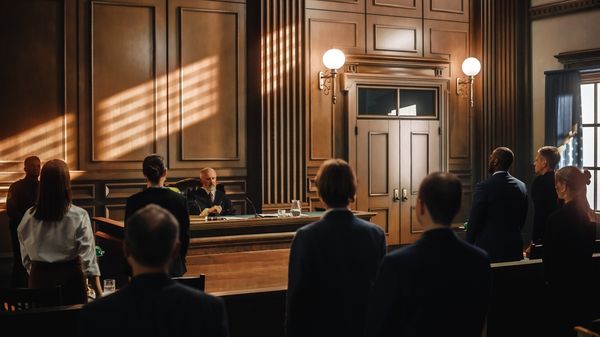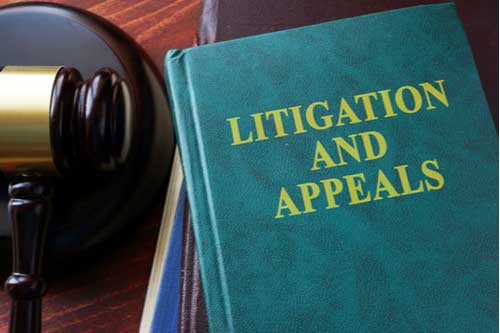- appellate briefs, Appellate Consulting
A Split in Opinion
For years, California Courts of Appeal have grappled with how to apply the substantial evidence standard of review to findings that were made under the heightened “clear and convincing” burden of proof (as opposed to the standard “preponderance of the evidence” burden of proof). This question has led to a split of authority, depending on how a Court of Appeal has resolved the matter.
One view recognizes that the clear and convincing standard requires greater certainty than the preponderance standard does. Appellate courts taking this view ask whether the record in the trial court contains substantial evidence. Said evidence must allow reasonable fact finders to make findings with the confidence required by the clear and convincing standard.
Another view holds that the clear and convincing standard has no bearing on appellate review for sufficiency of the evidence. In this perspective, a reviewing court examines the factual record for substantial evidence. But the court does not consider whether the evidence reasonably could have resulted in a finding made with the specific degree of certainty that the clear and convincing standard requires.
The California Supreme Court Has Resolved the Split of Decision
Which line of authority is correct? How must appellate courts review lower courts’ findings for substantial evidence where this heightened standard is used? This was the central question in Conservatorship of the Person of O.B., a 2020 California Supreme Court decision that finally resolved the issue.
The case involved the propriety of a conservatorship, which requires the “clear and convincing” evidence burden of proof. Proving facts by “clear and convincing” evidence requires more proof than the standard civil “preponderance of the evidence” burden of proof, but less than the criminal standard “beyond a reasonable doubt.”
The “clear and convincing” standard requires proof that the existence of a fact is highly probable, which requires more certainty than the preponderance standard of “more likely than not.” Sometimes, fact-finders must apply more than one burden of proof in the same case, depending on the legal significance of the facts they seek to resolve.
On appeal, however, factual determinations are typically provided deference under the substantial evidence standard of review, which fails to differentiate how such facts were reached and the degree of confidence with which the factual questions were resolved.
The Court determined that the appellate substantial evidence standard of review must account for the degree of certainty with which the facts were determined, and thus, must account for the requirements of the clear and convincing standard. The Court referred to it as respecting “the level of confidence this standard demands.”
When an appellate court examines a finding of fact that was established in a lower court by clear and convincing evidence, the appellate court must ask whether the record as a whole contains substantial evidence from which a reasonable fact finder could have found it highly probable that the fact was true. In making this determination, the appellate court must view the record in the light most favorable to the prevailing party below.
In addition, the Court must fairly defer to how the trier of fact may have:
- Evaluated the credibility of witnesses
- Resolved conflicts in the evidence
- Drawn reasonable inferences from the evidence
In other words, could a reasonable fact finder at the trial level have found it highly probable that the fact was true? The appellate court should make this assessment with the above specific criteria in mind.
Applying These Principles to Your Cases
In personal injury cases, the “clear and convincing” standard typically arises where a plaintiff seeks punitive damages from the defendant.
Because of the punitive and significant impact of punitive damages, California courts require proof of malice, fraud, or oppression by “clear and convincing” evidence before imposing such damages, even where the underlying liability only requires a “preponderance of the evidence” standard.
Therefore, any time an appellate court applies the “substantial evidence” standard of review to a case involving an award (or denial) of compensatory and punitive damages, its analysis will differ. Appellate briefs must account for the differences and must frame their arguments under each applicable standard. Doing so in a cohesive and accurate way requires intentionality and skill.
Notably, Conservatorship of the Person O.B. does not apply to all instances in which a fact must be proved by “clear and convincing” evidence. The case issued only a “general rule” for applying the substantial evidence standard. Appellate practitioners must be mindful of other circumstances (such as certain defamation cases) that apply alternative methods of reviewing facts.
In addition to crafting persuasive appellate briefs, Gusdorff Law offers appellate consulting. Our goal is to help trial practitioners understand appellate review standards so they can prepare their cases accordingly. If you would like to learn more about California appeals and how we can assist your trial team, reach out to us today.









